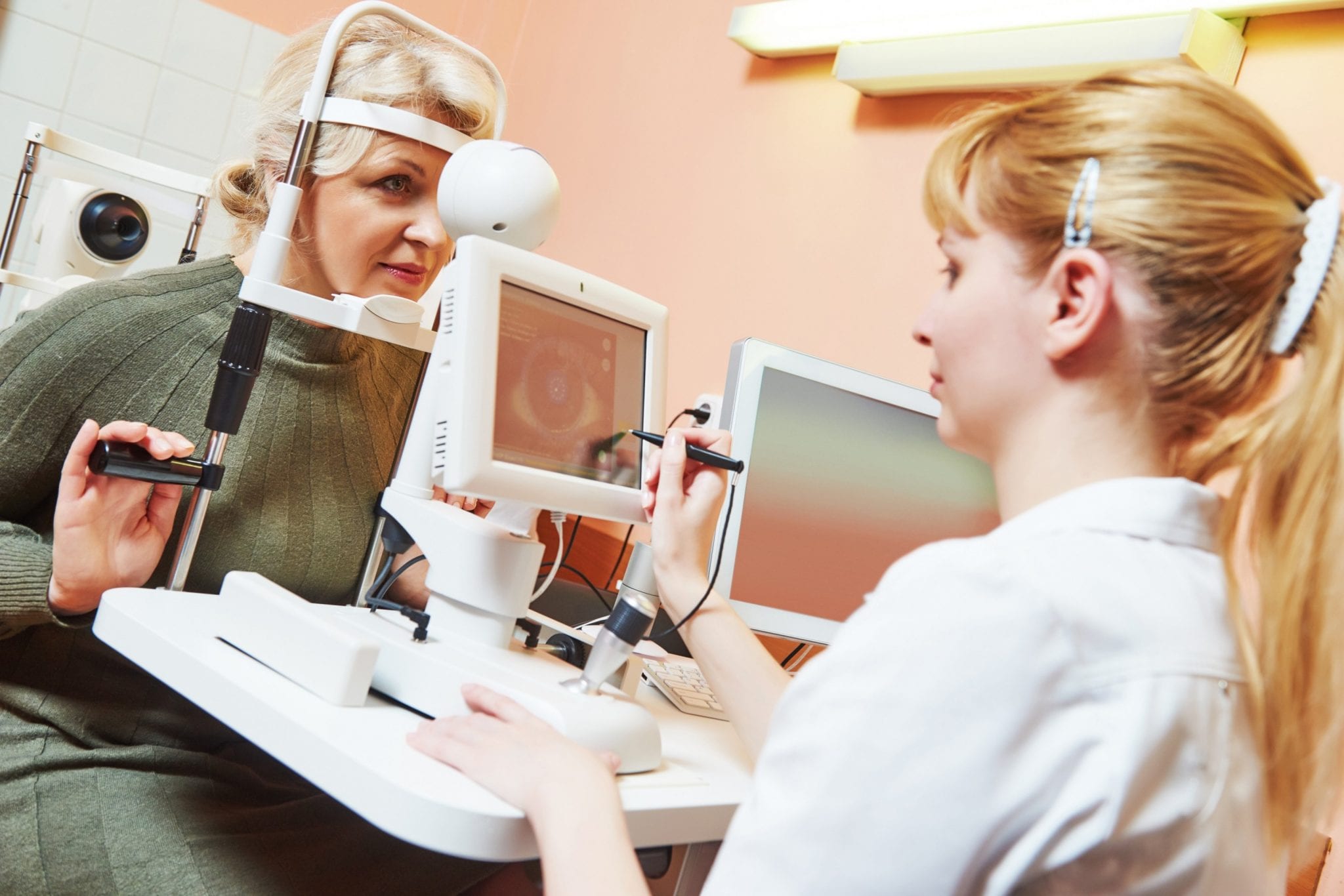Diabetic retinopathy is the leading cause of blindness among working-age adults in the United States. As many as 24,000 cases of diabetic retinopathy-related blindness are diagnosed each year. The early signs of diabetic retinopathy are often subtle. Fortunately, regular eye exams and early intervention can slow or even stop the progression of the condition before your eyesight is permanently damaged.
What is Diabetic Retinopathy?
Diabetic retinopathy affects individuals with both type 1 and type 2 diabetes. The longer a person has diabetes and the more their blood sugar fluctuates or is uncontrolled, the more likely they are to develop the condition. Over time, excess glucose in the blood can clog the tiny vessels that supply blood and oxygen to the retina. This can cause the vessels to weaken and leak blood and fluid into the retina. In some cases, the eye attempts to compensate by growing new blood vessels. These vessels are prone to breaking and bleeding into the vitreous humor of the eye. The can cause sudden vision loss and even retinal detachment.
Symptoms of Diabetic Retinopathy
Most people do not develop diabetic retinopathy symptoms until they have had the condition for approximately 10 years. The most common symptoms include:
- Eye floaters or spots
- Distorted or blurry vision
- Shadows in your field of view
- Cataracts
- Fluctuating vision
- Slow healing of corneal abrasions or other eye injuries
- Double vision
- Eye pain
- Near vision problems that aren’t related to presbyopia
- Loss of central vision
- Loss of the ability to see color
Diagnosing Diabetic Retinopathy
To determine if you have diabetic retinopathy, the eye doctor will perform a comprehensive eye exam that will include pupil dilation. By dilating your pupils, the doctor will be able to see early signs of changes in blood vessels, development of new blood vessels, retinal swelling, and retinal detachment. In the early stages, your doctor may choose to monitor the condition without any further treatment. As the retinopathy advances, laser surgery, such as photocoagulation, may be required to seal or destroy broken or leaking blood vessels in the retina.
Preventing Diabetic Retinopathy
Anyone experiencing the above symptoms should see their eye doctor as soon as possible. In addition to managing blood sugar levels, anyone with diabetes should schedule an annual exam even if they aren’t experiencing symptoms. At Florida Eye Specialists and Cataract Institute, we can help patients slow the progression of diabetic retinopathy by performing comprehensive dilated eye exams to identify the condition and recommend appropriate treatment. Call today for more information or request an appointment online.



